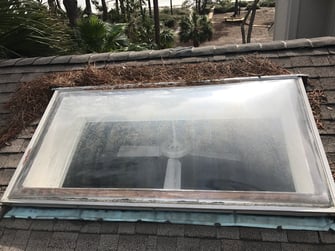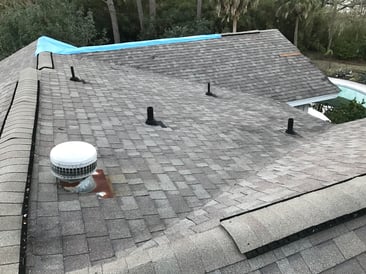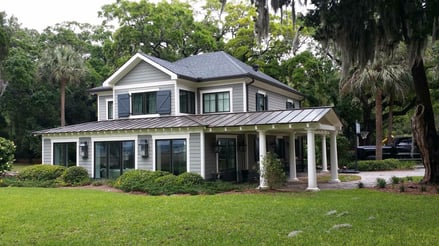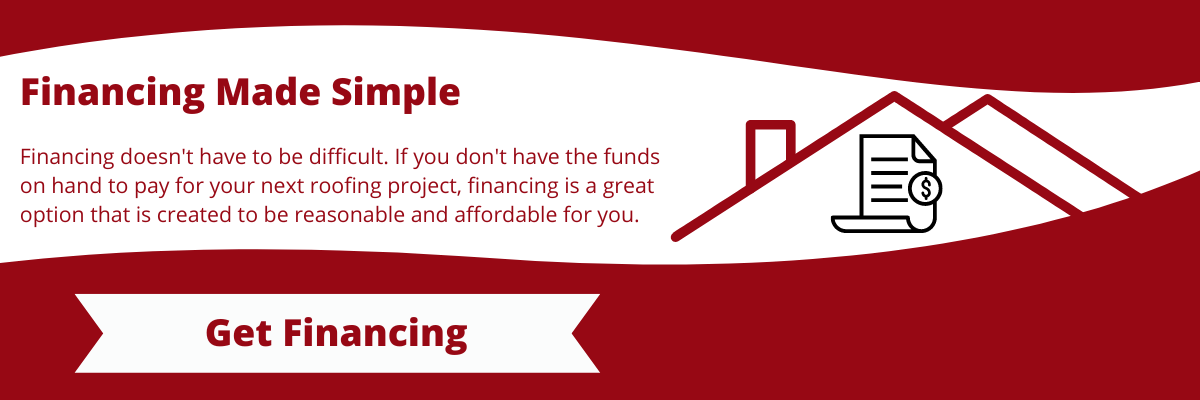
We're in the early months of 2023, and egg prices are at an all-time high. Let’s face it, the outlook for our near future isn’t pretty. If you find yourself pinching pennies, knocking down your Starbucks habit from five days a week to three, and skipping out on buying your favorite bottle of wine at the grocery store each week to save a little cash, we resonate with you.
Times are hard right now, and we’re all struggling in our own ways. RoofCrafters has been helping families with roof repairs and replacements since gas prices were $1.09 in ‘94, and the oil industry wasn’t negatively impacting our business and industry. So, we hear you.
Although things seem impossible right now, there's always a light at the end of the tunnel. What if we told you that you could save money on your utility bills each month by investing in a new roof? Hello, Starbucks. I’ve missed you. Roofs that are improperly installed, outdated, and weathered tend to break down more quickly than properly installed, updated roofs.
All of that being said, we’re going to educate you on how a new roof can help you save on energy costs in the long run. In this article, we’ll go over how your roof affects your utility bills, how you can lower your energy costs, the best type of roof for cost and energy efficiency, and if replacing your roof will help you save money in the long run. Go ahead and grab that bottle of wine after all, and let’s dive in!
How Does My Roof Affect My Utilities?
If you’ve watched your utility bills grow in price over the years, either your daughter has been leaving her curling iron on more often than you think, or it’s time to get a new roof. These high energy expenses can come from a few different sources, such as:

- Loose windows
- Uninsulated roof/basement
- Doors
- Outdated roof
- Improper ventilation
That winter chill and summer heat that radiates through our windows and doors are no joke, people. The temperature inside of our home can seriously affect how our roof does its job. High and low temperatures, as well as humidity levels that make their way into our homes, pose a threat to the cost of your utility bills. Excuse me, humidity, do you even pay rent here? As a homeowner with an outdated roof, or perhaps one that you believe wasn’t installed properly, it’s important to understand what makes a roof energy and cost-efficient, and how you and your family’s way of life can affect it.
How Can My Roof Lower My Energy Costs?
There are many different ways that your roof can lower your energy costs. These factors include:
- Regular maintenance
- Proper ventilation
- Roofing material/color
Regular Maintenance
How often you schedule maintenance for your roofing system will majorly affect its longevity, as well as the cost of energy. If your roof isn’t properly maintained, then it won’t last you as long as it should. Even if there are no apparent problems with the roofing system, you need to contact a roofer at least once, but preferably twice a year for routine roof maintenance.
By scheduling proper maintenance, you will be able to pinpoint any problem areas, and not only save money on your utilities, but avoid costly roof repairs, and even complete roof replacements altogether. Establishing a maintenance routine will ensure that the components of your roofing system are working properly. If they’re not, your contractor will be able to fix your problem as soon as possible, earning you cash on lessened utilities down the line.
Proper Ventilation
A proper ventilation system will save you a lot of money. Roofing ventilation systems are designed around the fact that warm air rises. The same thing happens within the walls of your home. This is the reason why basements are generally cooler, and the upstairs rooms and attic tend to be warmer.

During the heat of the summer months, the sun causes the air within your attic to become extremely hot. Your air conditioning inside the home will help to cool this hot air down. Vice versa, in the winter months, the cool air trapped in your attic will be heated by the temperature from the inside of your home.
During either season, a good ventilation system will allow the cool air, either coming naturally from outside or inside from your AC, to enter the attic near the eaves (edge or overhang of your roof) and exit near the peak. Traditionally, some of the vent areas will be lower, and the rest will be higher. Ultimately, the goal of your ventilation system is to make sure the temperature, as well as the humidity levels outside, match those that occur within the attic space.
Roofing Material/Color
Anyone with brown hair knows how tremendously hot the top of their head gets on a sunny day, taking the term “hot head” to a whole new level. Roofs with dark-colored materials do the same thing. They absorb much of the sunlight that shines on them, allowing harmful rays to penetrate deep into the material. If you live in an area with extreme temperatures, consider a lighter color shingle or material for your roof.
When it comes to choosing the “best” roofing material, the Queen B, we’d say go with a metal roof. Why? According to the Metal Roofing Alliance, “Metal is one of the most energy-efficient roofing materials available and can save your home up to 40% in energy costs and provide excellent insulation during the winter. The secret to metal roofing's energy savings is in its variety of finishes.
The basic, unpainted metal roof will reflect more solar radiation than an asphalt roof, which absorbs and holds heat. For homes in warmer climates, pre-painted or granular-coated metal roofing systems reflect solar energy and cool your home by re-emitting most of what solar radiation is absorbed.

A highly reflective and emissive painted or granular-coated metal roof is optimal for reducing energy consumption and can re-emit up to 90% of absorbed solar radiation.” Plus, they add a luxurious look to your home, so you can save money in style.
Will Replacing My Roof Help Me Save on Energy Costs in the Long Run?
Updating or replacing your roof will absolutely help you save on energy costs in the long run. As you can see, there are many different factors that can impact your utility costs, such as drafty windows and doors, lack of insulation, and improper ventilation. While some of these problems can be addressed with your family, keep those windows latched, son, most of these problems will dissipate with a new roof.
Now that you have a better understanding of how your roof affects your energy costs, if you believe that your money disappears and a larger sum each month, and that the roofing system is the main suspect in this act of thievery, schedule an inspection with RoofCrafters, and we’ll have a contractor conduct a thorough inspection of your roof and attic as soon as possible.
In the meantime, familiarize yourself with our financing page. We believe that every family deserves to have a properly functioning, beautifully crafted roof placed on their home that’s within their budget.
My name is David Toth and I am the lead estimator in North Florida with RoofCrafters Roofing. Originally from New Brunswick, I have called Florida home for the past 47 years. I enjoy cooking along with traveling to different historical areas in Florida when I have free time.



